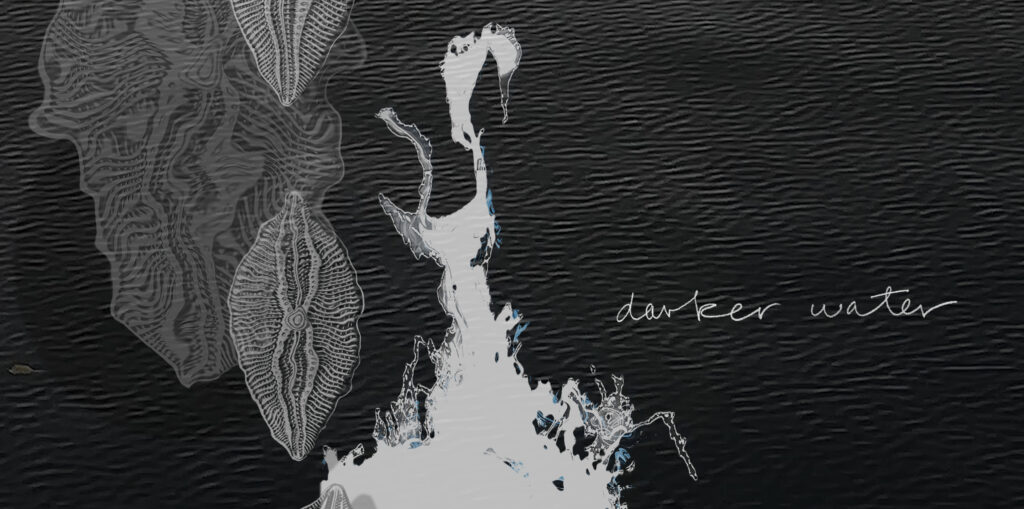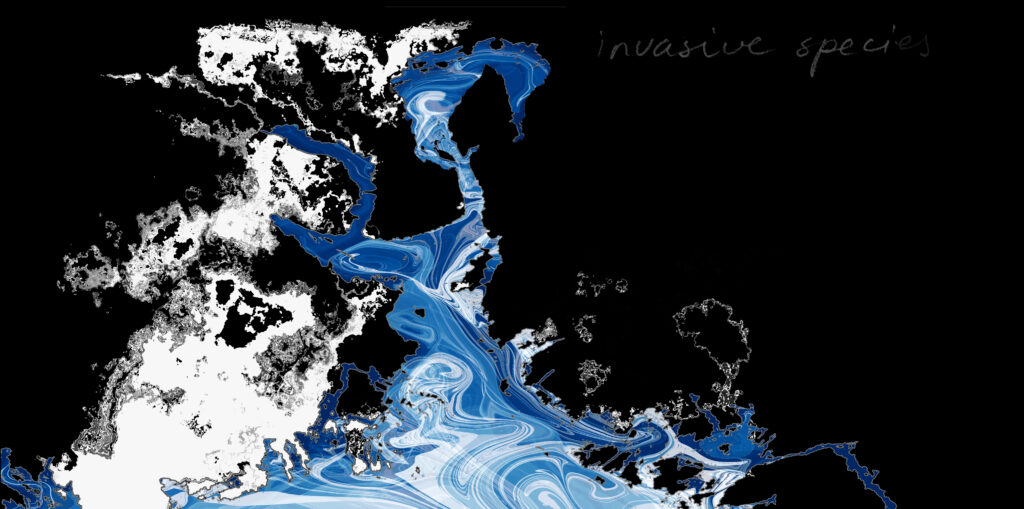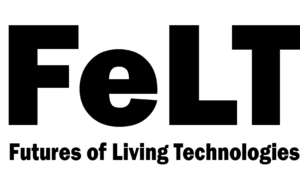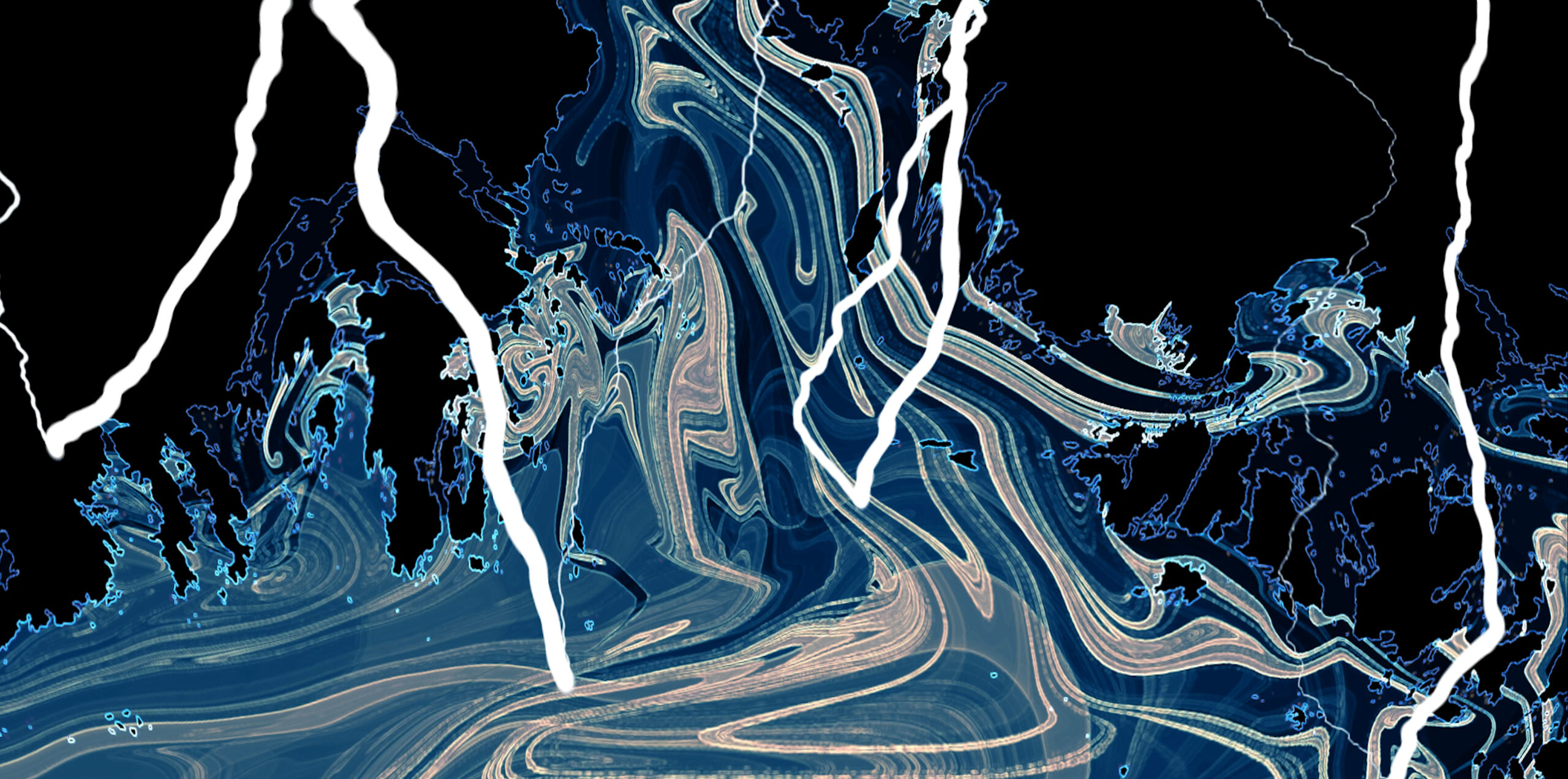FeLT project leader and artist Kristin Bergaust, and scientist Guillermo García-Sánchez will exhibit during European Maritime Days 2023 created in relation to the collaborative project Ocean Connections. European Maritime Days 2023 will happen during the weekend of May 24th and 25th, 2023. EMD 2023 will during the conference host an art exhibition to be displayed at the venue, where Bergaust and García-Sánchez will participate.
Ocean Connections
Trees, forests, rivers, mountains, seas, stardust, DNA — imagine the environment not as the backdrop of our activities, imagine objects of nature not as items to be appropriated or exploited, but as subjects with intrinsic value and full juridical rights – NaturArchy
Abstract
Ocean connections is the working title of an art-science project that Kristin Bergaust and Guillermo Garcia Sanchez are collaborating on. The project is being developed through residencies at the Joint Research Centre (JRC) of the European Commission, and by individual research and artistic work. Initially, there are no set research questions or prescribed results or outcomes.
Introduction
The flow of the ocean influences many processes in ecosystems of the sea across the globe. In a Nordic context, for instance, spread of dark water and resulting bloom of algae creates altered conditions for marine life.
Kristin and Guillermo are working with these processes in an experimental scientific and artistic mode of collaboration, combining Guillermo’s mathematical modelling with Kristin’s artistic take on animation and visuality.
Throughout the process, the duo are learning about biodiversity in general and oceanic ecological conditions more specifically. It is crucial for them to find working modes and methods to share their work in a manner that enhances both science and art, and allows for reflection and afterthoughts.
Background
In visual representations the oceans are often shown as blue empty fields, maybe annotated for depth, instilling an idea of empty voids. To further and foster a kinship and relationship to the life in the oceans, these representations as well as metaphors such as the Blue Mirror should be contested.
Understandably, the experience of oceans as living environments of varied and complex life-forms is less accessible for humans living a land-based life. The oceans contain at least 700 000 species[1], from one-celled microbes and small plankton and algae to the largest mammals on the planet, whales of an immense scale, a heart could weigh 500 kg. The wonder of life in the oceans should be better known by humans, marine life are co-habitants on the planet we rarely see and maybe do not know much about. At the same time, residues of human activity threaten biodiversity through chemical contamination and pollution resulting from a range of human activities.
The ocean is not somewhere out there but inside ourselves. Its primordial waters, in which life was born, fill our cells. We are part of the ocean and its flows. Whatever we do to the oceans we do it to our own body.
Date:
May 24th to May 25th 2023
Location:
Brest Expo, Parc des Expositions de Penfeld, Guilers, France
Registration:
Before May 19th
More information:
https://european-maritime-day-2023.b2match.io/page-3101

Photo: Video still by Kristin Bergaust.
Scientific background by Guillermo García-Sánchez
This project is being developed together with Guillermo García-Sánchez, scientist at Applied Mathematics department, Instituto de Ciencias Matemáticas (ICMAT) of the Spanish National Research Council (CSIC). His work addresses the development of novel dynamical systems tools and computational techniques in the chaos theory framework for providing new insights into geophysical flows and met/ocean modelling. Currently, he is working on the real-time application of these ideas to address critical environmental challenges like marine litter pollution, algae bloom and oil spills. Moreover, he is actively working – in collaboration with the JRC – to develop a coupled oceanic model for simulating waves and storm surges in order to compute probabilistic projections of extreme sea levels for the present century. This study aims to better understand the effects of climate change on Europe, for a number of climate change impact sectors, and how these effects could be avoided with mitigation and adaptation policies.
The biggest challenge in studying oceanic transport of oil slicks or other pollutants like marine litter is that the ocean is turbulent. In addition, researchers must also consider complications introduced by chaos in the ocean. Chaos refers to the observation that in dynamical systems, small differences in the initial conditions of the system can yield widely diverging outcomes, rendering long-term prediction of such systems’ behaviour extremely difficult. Chaos does not represent randomness; rather, it appears in deterministic systems—that is, systems whose behaviour follows a unique evolutionary path that is fully determined by initial conditions, with no random elements involved. Observational technologies based on satellite imagery and remote sensing techniques have uncovered deep connections between the structure of transport in fluids such as oceans and atmospheres and the mathematical theory of nonlinear dynamical systems. Indeed, imagery often reveals geometrical structures and shapes. Transported material in these flows aligns along boundaries called invariant manifolds or Lagrangian Coherent Structures (LCSs). In nonlinear dynamical systems like the ocean, LCSs can be treated mathematically to help identify how and why fluid flows are organized into ordered patterns. LCSs can be considered to represent the “skeleton” of turbulence, and although they are typically hidden from plain sight, they can be visualized using visible tracers. Using the chaos theory and Lagrangian Descriptors to represent the LCSs, we will provide an intuitive vision of contaminant evolution, their history and how it mixes up on the ocean surface, allowing us to explore new insights and connections between the ocean, biodiversity and climate change.
Artistic concept by Kristin Bergaust
Western art history and visual culture has an established mode of representing nature from an anthropocentric viewpoint. Examples can be renaissance construction of perspective based on the human eyesight and symbolic renderings of natural phenomena as representations of human emotions, prevalent in romanticism and throughout modernism. Much as I admire these artworks, I search for other perspectives. I am inspired by feminist film theory demonstrating the need for freeing the camera from a certain ideology of representation (Visual Pleasure and Narrative Cinema, Laura Mulvey 1975). Could altering the human gaze create a more balanced representation of other living beings and environments? By balanced, I think of a representation that gives credit to the other organism’s characteristics, considering its senses and abilities. There might be faculties and competences present in other beings that our senses cannot fathom. It might be that we could learn to use our senses differently by new manners of stimulation or to enhance and change our experiences through technology. Visual and aural technology that do not mimic human senses and interpretations could be utilized (modelling, microscopy, radiology, medical imaging techniques, 360 photo and video among other possibilities). Also indigenous and agricultural traditions and knowledges might be employed. Combining these experimental methods might lead to new constructions and that imagination and fantasy will be in play as much as science. Still, changes in sensuous input, might influence human conduct, instil empathy and action and make us more understanding and communicative with non-humans. At the core of my artistic research, is an urge to make visible and represent what is usually not cared for or valued, and at the same time demonstrate that scientifically generated material can have engaging aesthetic qualities, such as the images developed by Guillermo and his research group when applying Lagrangian descriptors to open waters.
Scientific tools and methods might provide exits and alternative viewpoints. Looking at a process rather than a photographed moment, or a course of events through measuring and modelling, might lead to different perceptions of the environment. Collaborating to use scientific imagery along with artistic methods and presentation modes, what we try out to do in Ocean Connections is to try out ways of creating immersive experiences of the ocean, full of life but also threatened by dire environmental crises and ecocide. The realities that are represented by the data that we decide to work on, will also influence the content and how the work will be formulated and shaped. Examples so far have been oil spills, but we consider possibilities to look at movements of organisms such as algae. The Copernicus https://marine.copernicus.eu/ is in this context a main source of information and material.
Artist Statement by Kristin Bergaust
My main mode of work are video bricolages of my own footage in different formats, archive materials, drawings and animated visuals. In this montage or collage practice, my interest is to try out scientific renderings as material, especially when they are so appealing and revealing of natural processes as the work developed by Guillermo and his group.
The presentation of the results for the European Maritime Days is a single screen video – a work in progress that is leading to the final art work, a multi-screen interactive installation with spatial modes of display. I am particularly interested in developing an immersive experience, either by using large projections or a dome projection. Since I employ quite a bit of 360 material, I would like to develop this further either as a spatial installation or as a VR project. This will depend on what I find in the artistic research process and what resources and spaces are available.
Earlier art projects in the field have investigated possibilities, for instance shown in the anthology Tidalectics (Hessler, 2018) which documents expeditions of artistic and scientific work in the Pacific. My earlier works include Wasserwerk on the dynamics of water (with Nicola Schröder) 1991 to 1993. This was an early example of working with a scientist and encounter research in the field. Also the Oslofjord Ecologies project and publication (ongoing) is very relevant to this proposal.

Photo: Video still by Kristin Bergaust.
This work has been made possible by
The European Commission, specifically its Directorates-General: Maritime Affairs and Fisheries, and Joint Research Centre, as a way to engage EU citizens in our ocean and seas.
A special thanks goes to Evangelos Voukouvalas (external consultant at Unit E1 of the Joint Research Centre, European Commission) for the support received for the development of video animation Ocean Connections (2023), showcased in Brest, 23-24th of May, at the European Maritime Days.
References
https://www.bergaustvideo.net/wasserwerk-1991-93
Bergaust, K., Smite,R. And Silina, D. Eds (2020) Oslofjord Ecologies. Artistic Research on Environmental and Social Sustainability http://rixc.org/en/acousticspace/issue/788/
Hessler, Stefanie (ed.) (2018) Tidalectics. Imagining an oceanic worldview through art and science. London:TBA21-Academy
García-Sánchez, G., Mancho, A.M., Ramos, A.G. et al. Structured pathways in the turbulence organizing recent oil spill events in the Eastern Mediterranean. Sci Rep 12, 3662 (2022). https://doi.org/10.1038/s41598-022-07350-w

